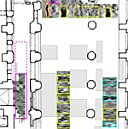0233 History of the Medieval Furnishings of the Franciscan Church in Toruń during the Reformation Period
Identifiers (Article)
Identifiers (Files)
Abstract
The article investigates the history of the medieval interior design and furnishings of the former Franciscan Church of the Assumption of the Blessed Virgin Mary in Toruń during the Reformation period. The Franciscan Friars were brought to the Old Town of Toruń in 1239; they used the conventual complex until 1557, when it was taken over by the Protestant congregation of the City of Toruń, the former Franciscan Church becoming the major Protestant church both in Toruń and the surrounding region. In 1724, the former Franciscan complex was returned to the Observant Order, who added a number of serious alterations to the church’s interior (including the provision of eighteenth-century furnishings and altars with their retables, and the removal of an old rood screen, etc.). The article elucidates the way medieval interior design and furnishings—mural paintings, tomb slabs, the pulpit, the organ casing, and matronea—functioned in the lay area of the church when used by the Lutheran congregation. In addition, the following furnishings of the former monastic ecclesia interioris are discussed: the high altar and its retable, the medieval choir stalls, the rood screen, and the late medieval sculpture of the Crucified Christ. The analysis of the alterations added to the church’s interior demonstrates that measures undertaken when converting the church for the needs of the Protestant congregation were of a pragmatic rather than iconoclastic nature. The former Catholic and Franciscan medieval furnishings of the Church of the Assumption of the Blessed Virgin Mary were neither destroyed nor removed. What is more, whenever possible, they were used in a new interior design, and were either modernised or provided with inserts for the purpose.
Statistics

License

This work is licensed under a Creative Commons Attribution-NonCommercial-NoDerivatives 4.0 International License.




